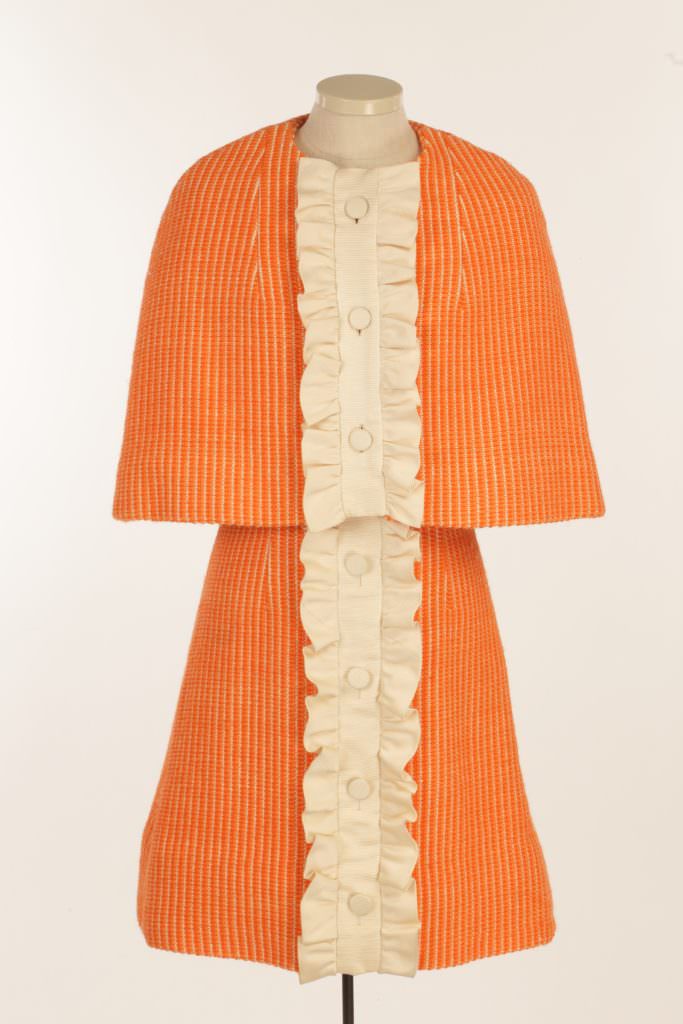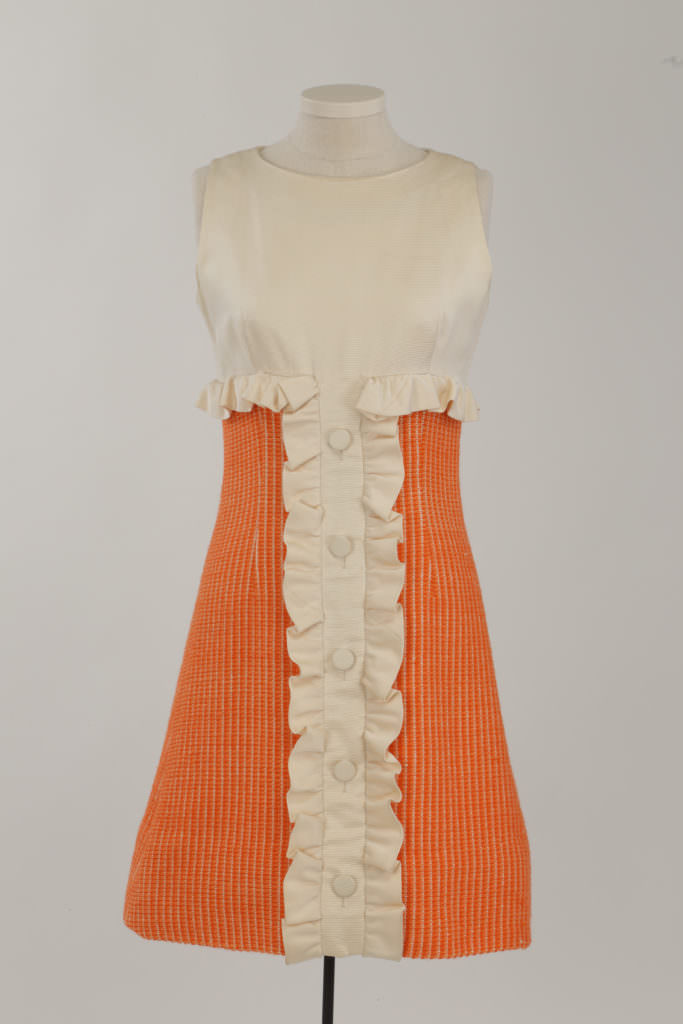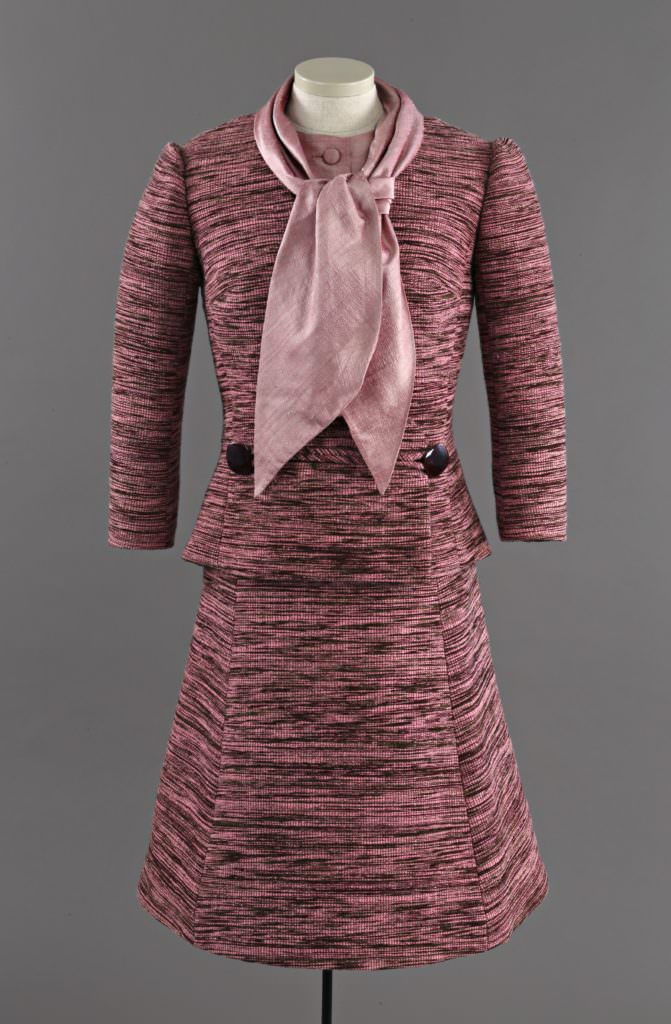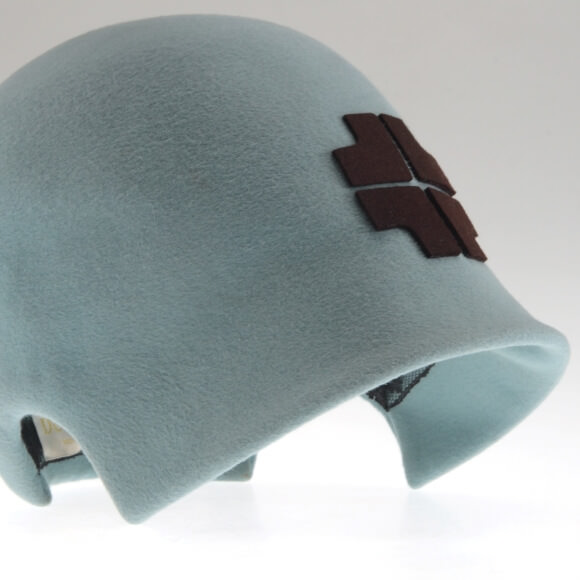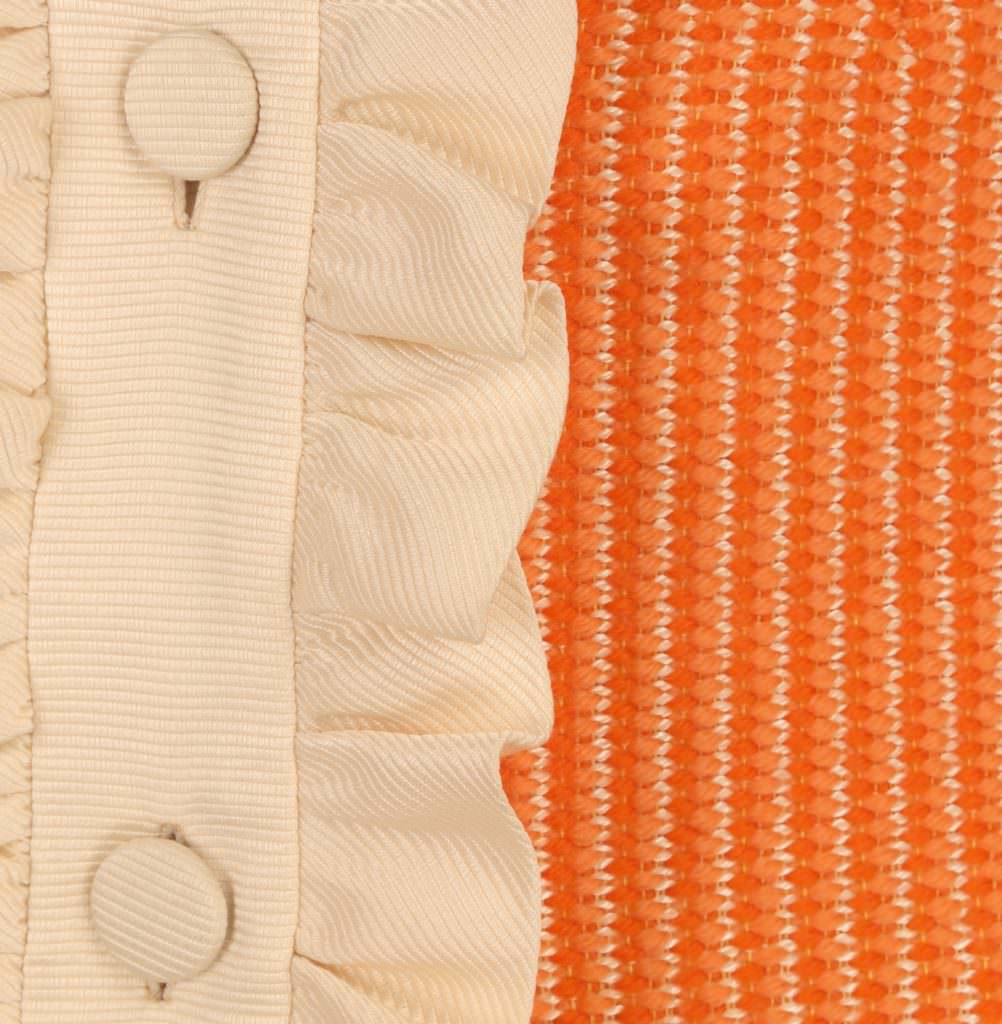
Ensemble (detail), Marielle Fleury, 1966. Gift of Marielle Fleury Boutique Inc., M972.104.4.1-4 © McCord Museum
In 1966, Quebec’s Ministry of Industry and Commerce sponsored a fashion trade mission that toured four European cities—Paris, Brussels, Milan, and London—in May and June of that year.
Entitled La mode québécoise en voyage, it was created to advertise the upcoming Expo 67 and attract visitors to Montreal; the collections presented were not offered for sale.
The theme of the fashion show was a wardrobe for travelling to Montreal the following summer. Marielle Fleury and Michel Robichaud each designed nine outfits using handwoven fabrics from weavers Édith Martin of Trois-Pistoles and Lucien Desmarais of Montreal, along with textiles from manufacturer Bruck Mills Limited.
.
The goal of the mission, as stated by Gérard D. Lévesque, the Minister of Industry and Commerce, in conjunction with Pierre Laporte, the Minister of Cultural Affairs, was to “promote Quebec fashion abroad, building on its already enviable reputation in Canada.” In addition to singing the praises of the two clothing designers, the widely distributed promotional materials lauded Irene of Montreal, who had made numerous hats for the show, Pierrette Leclaire, who created the enamel-on-copper buttons used, Walter Schluep, who designed the jewellery, and Donald Poulin, delegated by the Canadian Hairstylists Association to style the models. The shoes were provided by Wallace Footwear Ltd. and Cristina Shoes. The press release also highlighted the vitality of the Quebec fashion industry and the government’s role in creating specialized fashion schools over the previous quarter century, which helped encourage design talent.
The tour began in Paris on May 27, at the Cercle France-Amérique, continued on to the Canadian Embassy in Brussels on May 31, the Quebec House in Milan on June 10, and finally to the Quebec House in London on June 13.
In each city, models Lise Carreau, Nicole Deslauriers and Lise Tremblay were photographed in the streets: posing with bobbies and guards from the Tower of London, in front of Paris cafés and on the steps of the Paris Opera House, alongside the iconic Manneken Pis statue in Brussels, and in front of the Milan Cathedral. These photographs were widely shared with the media.
During each indoor fashion show, Robichaud and Fleury would stand in the wings and provide a brief description of each of their nine outfits while the models walked the runway. Fleury’s collection included multiple references to traditional Quebec crafts, while Robichaud’s collection concluded with a hostess uniform he had designed for Expo 67, thus recalling the mission’s primary objective.
Generally speaking, the mission received very positive media coverage in Quebec and Canada. It was the most important fashion event in the country since the unveiling of Robichaud’s Expo 67 hostess uniforms in October 1965. The magazine Châtelaine provided the most visibility, devoting a four-page illustrated editorial to the tour in June 1966 in which it asserted that the tour was a “great springboard for Canadian fashion.”
Until that moment, Quebec fashion houses active in the Canadian or North American markets had rarely tried to associate their products or successes with the province. However, in this case, fashion was being promoted via diplomatic channels and presented in places where design identity was a proven marketing tool, e.g. “Parisian fashion” and “Italian fashion.” Accordingly, the mission focussed on the distinctness of Quebec and its history, and how this had created a specific design identity that generated a feeling of pride about its unique national character. This validation that Quebec talent and identity could be exported gave ready-to-wear manufacturers an immediate incentive to hire Quebec designers and produce and promote branded collections, something they had previously been reticent to do.
In the end, the tour achieved, and indeed subtly surpassed, its initial objectives, creating increased awareness in Canada that the talent of Quebec fashion designers was worthy of attention from Europeans, in a field largely dominated by Europeans.
By associating a distinct artisanal and cultural heritage with the resolutely modern Expo 67 project, La mode québécoise en voyage proved to be a unique milestone in branding Quebec’s fashion identity.
Sources
Publication date
01/10/2004
Writing
Dicomode
Share
DownloadRecommended entries
© MCCORD STEWART MUSEUM 2024




